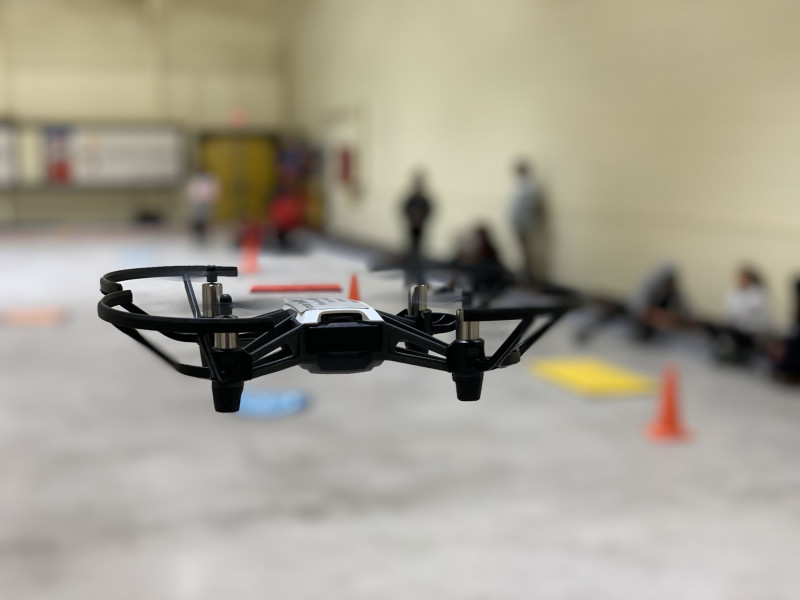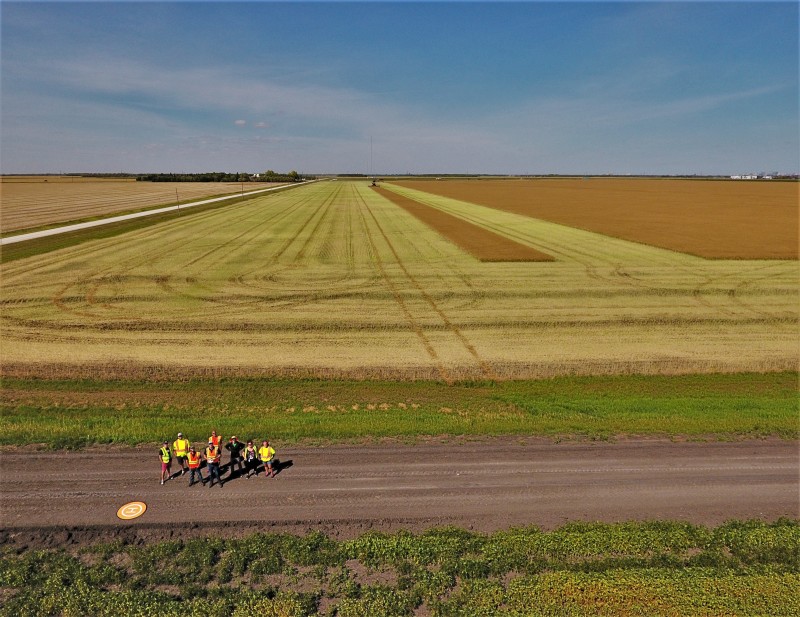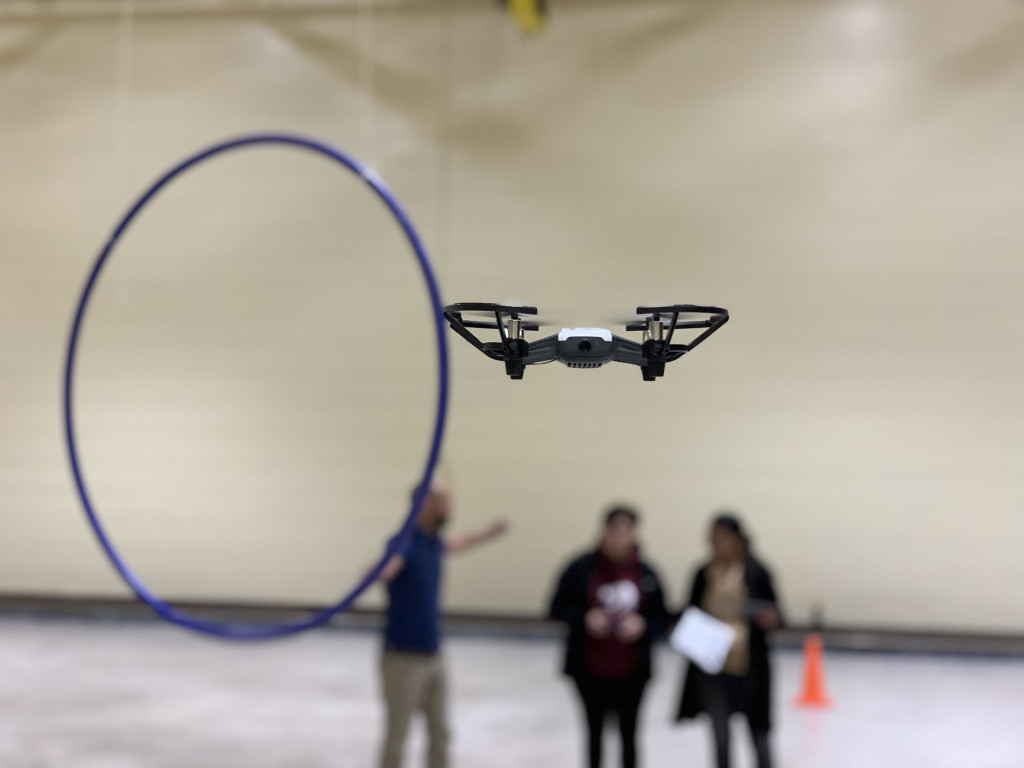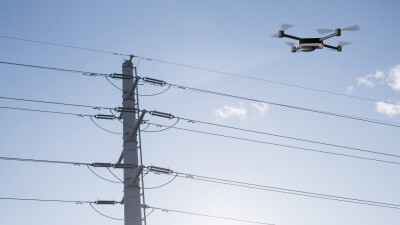Anyone who works with commercial drone technology knows that public support continues to be an issue that stands in the way of widespread adoption. Swaying the court of public opinion is a challenge that commercial UAV operators will have to overcome if the industry is to draw new talent into the field and change prohibitive regulations. Programs like M3 Aerial Productions’ "Drones in the Classroom” (DITC) RPAS (remotely piloted aircraft system) Training are not only designed to create a proactive way to garner support for the commercial UAV industry, but they’re also set to build a capable workforce that can utilize drones in powerful ways.
Drones in the classroom have the potential to attract new talent, but also normalize the technology through repeated exposure in education. Although bringing new technology into the classroom is not a new approach—when computers first became readily available, they were introduced into school programs for similar reasons—this type of training could have a profound impact on the future of the drone industry. As we have seen with computers, children who work with and around technology from a young age are more likely to embrace the benefits in order to enable their eventual adoption of it as adults. This could open up new demand for drone technology, as well as more progressive drone legislation and regulations.
This is why Matthew Johnson, President of M3 Aerial Productions, is working to encourage educators to introduce drones into their classrooms, and it’s something he’s uniquely qualified to do. Before he started his career in drones, he was a high school mathematics teacher in Winnipeg, Manitoba. There he learned first-hand how drones could add value to the classroom by using them to teach trigonometry to his students.
Trigonometry is a notoriously difficult topic for students to grasp. Once Mr. Johnson introduced drones into the lesson plan though, he discovered that students were not only understanding trigonometry, but they were actually enjoying it. This experience eventually led him to the career he is in today: training people of all ages to operate drones safely, compliantly, and intelligently.
“It’s the duty of teachers to instill in youth an enthusiasm for the technology, because that is what our future is predicated on,” Johnson told Commercial UAV News. “That’s where the job opportunities lie; so students need to be made aware of these opportunities.”
He mentioned that right now, most students and teachers are not aware that there are career opportunities in commercial UAV. Many of them still see drones as a “cool toy”, but not something that is ever going to allow them to do much more than take pictures from the sky. This is the issue he’s looking to address with programs like “Drones in the Classroom”.
“We have to regularly voice the message that drones are not just for real estate, and they are not just for fun photography stuff; that is just a small portion of the applications of drone technology.” Johnson said. “The safety they provide across many industries is incredible. Some of this work is extremely dangerous, and it boggles the mind how many people are putting their safety at risk, when we can come in with drones and do those jobs at a fraction of the risk.”
That’s one of the reasons he encourages teachers to look at the bigger picture and convey to students that drones are used for many applications like agriculture, search and rescue, and pipeline, hydro line, and rail line inspections. However, it’s not just about research. In order to get this message out, teachers not only have to know how to fly a drone, they have to be transformed into quasi-experts on drones so that they are aware of their applications and uses. For this to be successful, any drone training program aimed toward educators needs to be structured so that it is easily accessible for educators.
“It’s essential to combine both the educator’s and aviator’s perspective when developing a program like this,” Johnson continued. “But you want to come at it from the viewpoint of a teacher, by breaking things down into smaller chunks—the way a teacher would teach students. You need to approach drone training so that teachers can easily pass this on to students in a similar format, by breaking it down into steps and actionable processes.”
This is how M3 Aerial has structured “Drones in the Classroom”. The training process begins with Advanced RPAS Ground School, which prepares teachers to obtain their advanced pilot certificate in Canada. The advanced certificate permits operators, among other things, to fly drones approved by Transport Canada within 16.4 feet of people not directly associated with the operator. This allows students to be up close and engaged with what the teacher is doing with the drone. The certification training is then followed by an extra day of training that teaches educators how to integrate drones into the classroom at a division-wide, and school level. Teachers are provided with lesson plans and strategies for bringing drones into their programs as tools to help achieve curricular outcomes, as well as best practices for proper care, safety, and maintenance of the drones.

M3 Aerial recently introduced this new training program to educators at the Western Drone Show in Winnipeg this past May—an event specifically geared toward introducing educators to the drone industry, and conveying the value of drones. Drone operators, principals, teachers, and students from across Saskatchewan, Manitoba, and Ontario were in attendance. The event had a positive turnout and helped garner widespread support for their program.
“As a result of the show, teachers have gone back to their schools and school divisions and written letters to their superintendents and principals to inform that drones are an extremely valuable tool,” Johnson said. “Superintendents and principals often don’t realize the impact that drones are having on industry and our society. As a result, many school divisions are now asking ‘How can we get involved in this?’ so at least now the questions are getting asked.”
This is the kind of interest Johnson hopes to see from the rest of North America with future conferences. The Frontier School Division (FSD), who serves rural and remote communities across Manitoba, has embraced the DITC program, being one of the first school divisions in North America to adopt a division-wide drone integration program. FSD contributed a major component to the Western Drone Show, by presenting their journey through the program, from teacher-training, to divisional drone-kits, and assessment strategies.

The Frontier School Division is a prime example of how a successful and dedicated drone program can positively impact a community. Their goal of this program is ultimately to help provide opportunities for students to obtain further certification, knowledge and skills that may enable them to contribute in their communities by means of new technology.
“Frontier School Division are setting a new precedent by implementing a strategy at a divisional level,” Johnson mentioned. “The fact that they are working with youth in marginalized communities, who are often restricted from opportunities due to their communities’ remoteness and size, provides them with a huge opportunity, and can encourage people to stay within their community.”
Once interested students obtain their own certifications, they could potentially enter the workforce straight out of high school with a valuable new skill set. They could also take that interest and experience to post-secondary education, where they can help develop new, innovative applications for drone technology.
Although the Frontier School Division stands out as an exemplar of how a fully integrated drone program can look, other school divisions in Canada are also participating in M3 Aerial’s program. The commercial UAV industry is currently experiencing a labor deficit as businesses struggle to find qualified UAV professionals to fill open positions. Bringing drones into our schools is a promising path toward building a future workforce, big enough to handle an ever-growing demand, and to help change the overall perception of the technology.
















Comments